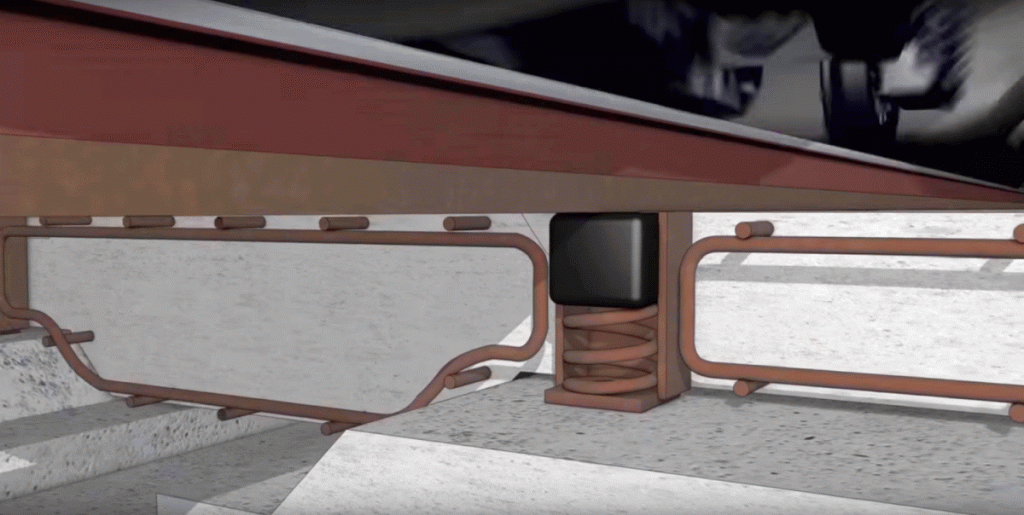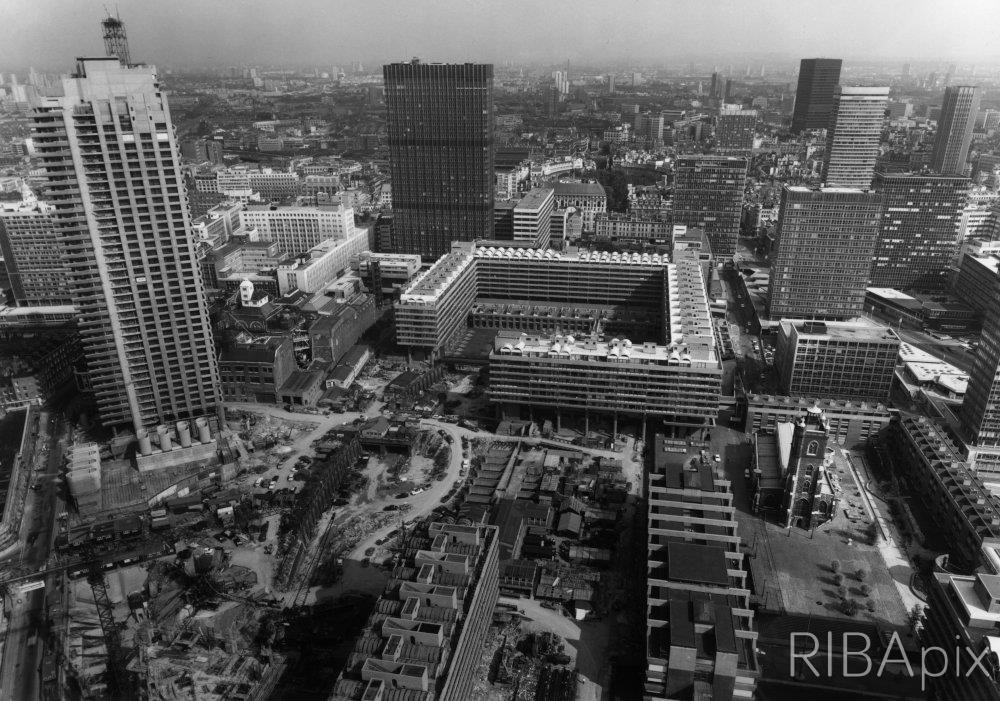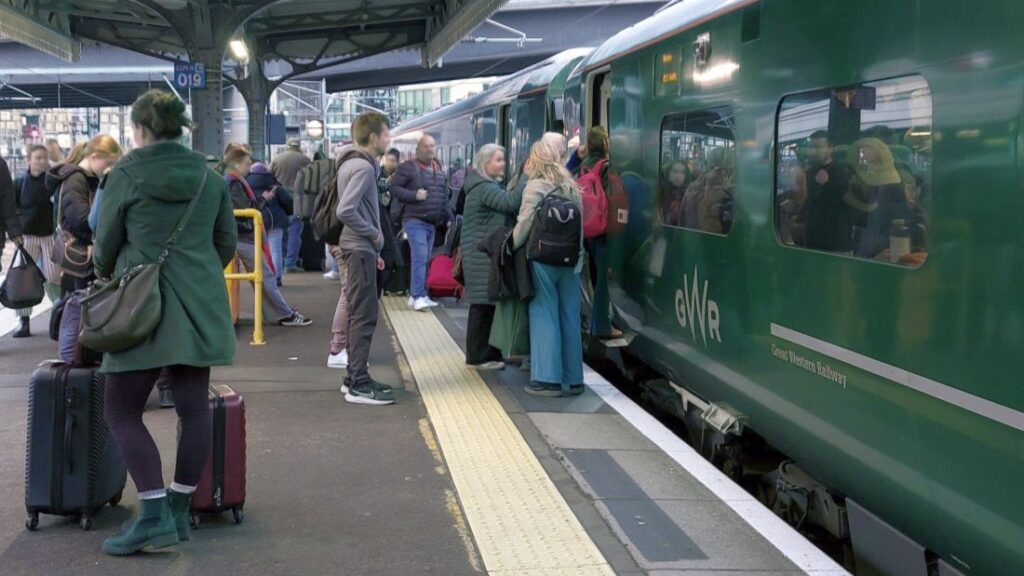Briefly, this is an overview of the problems of tube trains running beneath the Barbican Estate in the City of London, and the huge noise nuisance that’s generated as a result. My post looks at the history of the estate’s tunnels’ construction and how things look today. It also looks at the noise blight which the residents suffer. Its not something to take lightly, the noise and vibration generated by the trains is huge and has been getting worse over the decades. I also examine the question of running tube trains to the Moorgate terminus platforms. Its illustrated with pictures and diagrams to help establish the situation.

Don’t get caught on the wrong side of the tracks at Moorgate!
To start with, have you ever been on a Metropolitan/Circle/Hammersmith train that terminates at Moorgate? Its a nuisance isnt it! Turfed out the wrong side of town and where one goes in order to continue their journey to Liverpool Street or the Aldgates can be confusing especially in the rush hour. The problem is if one happens to be on a Moorgate terminating service people assume they can just get off the platform there and wait for the next train on to Liverpool Street, Aldgate East or Tower Hill. They couldn’t be more wrong! Those of us in the know do get off at Barbican before there’s any chance of being dispatched forthwith into the Moorgate abyss!
It is for this reason alone these services are an anachronism. Other locations where passengers can find themselves similarly inconvenienced are Baker Street, High Street Kensington and Tower Hill. The Moorgate scenario is perhaps the worst of all these!

Article from end of January 2020 on the issue of noisy Barbican trains, published in City Matters.
The pain, the annoyance of being caught short by a Moorgate terminating service couldnt be any more sobering when one realises this (and the other trains passing through the area) too cause a hindrance to the people who happen to live above those very tunnels. Its something few passengers know of or can even appreciate. And its a subject I shall write about at length.
There have been many reports over the years regarding the issues. The most recent of these can be read here at the BBC and at City Matters. Some may ask, why not an article on the noisy parts of the tube and how that affects the passengers. I could do a post on that! However I think that subject has been covered well in other sources/the media – but just not this one – and its also a more complex situation that the other scenarios!
Why were these tunnels built?
Embed from Getty ImagesThe old tunnels seen in this post war view. The new tunnel route goes straight across the centre of the picture. Source: Gettys
One of the huge obstacles to redevelopment at the Barbican were the tube and train tracks and tunnels that wove their way through the area. The old Metropolitan and Circle underground lines consisted of manly open air section with three short tunnels between Aldersgate & Barbican and Moorgate..The architects of the Barbican, Chamberlin, Powell & Bon, said in April 1959:
“The existence of the underground railway which cuts through the site is disturbing both from a visual point of view and because of the noise it causes. It has long been accepted that it must be covered over if a residential precinct is to be created.”

Artist’s sixties sketch for the proposed Barbican development. Source: Internet Archive
It was acknowledged the concrete structure would generate noise and vibrations, thus the decision was made to isolate the tunnels – especially where it was nearest to the Barbican concert hall and cinemas. Thus the world’s first built floating slab rail track was built to ensure peace and quiet for the new estate.
Noise was something very seriously considered when the estate was planned. If one knows the place or happens to visit it they will see there are no roads to be had and not a single car or bus or lorry to be seen here, there and everywhere.
Exactly! The Barbican was meant to be an oasis of peace and quiet in the centre of The City. That meant roads, as well as railways, had to be hidden from view. It might come as a surprise to learn the Barbican in fact has over three miles of roads! These are just not generally visible (apart from Beech Street in a ground level tunnel and which also unintentionally forms an all important pedestrian short-cut through the Barbican area.)
Unfortunately the railway, by way of being the most central thoroughfare, happens to be the most problematic for residents. In despite of the tunnels’ advanced sixties construction technology, its actually quite ironic the tube lines are a huge detriment to the peace and quiet of the area. According to consultants there’s ‘a low-frequency “rumbling” which shook floors, walls and ceilings, rattling fittings and crockery’ in the three worst affected Barbican blocks of flats (Brandon, Defoe and Lambert Jones) surveyed.
The noise problem from the tube trains
The people in the Barbican estate clearly find the tube a considerable intrusion in their lives. It shortens their potential sleeping hours. Its been a constant thorn ever since the tunnels between *Aldersgate & Barbican* (now simply Barbican) and Moorgate were altered to a new alignment in order to fit into the Barbican redevelopment. The tunnels are in a concrete box which, despite their advanced design, are apparently excellent for generating noise, with the worst affected flats and apartments being right on top of this box with little in the way of noise mitigation.
The following map I did will help to place the different elements in this particular situation…

The alignment of the tunnels drawn onto a Google aerial of the Barbican to help establish the actual location of the sub surface tube lines!
Marked in yellow at top left is Defoe House, in the middle is Gilbert House and at bottom right Brandon Mews. Moorgate station is just off the map at right. The main Barbican centre is at the top and it can be seen just part of the tunnels go underneath the actual Barbican Centre (this being the cafe and restaurant area.) The tunnels are mostly under the terrace overlooking the lake. The green roofed building at the bottom is St. Giles Cripplegate church. The Metropolitan, Circle and Hammersmith lines run almost entirely under the lakeside terrace whilst the Thameslink/Widened Lines – which are the currently disused tunnels – run underneath the fountains and lake itself.

The problems with tube trains directly beneath the Barbican. Source: Barbican Association
As the above text illustrates, the S7 and S8 stock have done little to resolve the issues. In fact it seems they have exacerbated it. Some think its because these trains can carry far more passengers thus their total weight is well in excess of the old C69/78 and A stock which were previously used. The total weight of trains does in fact affect the amount of noise that is made as we will see later regarding Leytonstone on the Central Line.
The noise problem at the Barbican has been evident since the 1970s as records show. One wonders why the seventies and not the sixties when the tunnels were finished? I puzzled on this and then found why. The tunnels were ready to have trains diverted through them by 1965, but they were not fully finished until the early 1970s, and this is the time the first residents moved into the various premises affected by the noise.
Information from TfL has shown the most complained sections of the Hammersmith & City and Circle Lines in terms of noise happens to be the stretch through the Barbican.
Of interest is the brand new Crossrail tunnels. These use the same alignment but are deeper down. They are at least 34 metres below the Barbican lake. The surveyors, having learnt of the gripes from the Barbican, decided to build the Crossrail tunnels much deeper and with special floating track just to be doubly sure no noise from the Class 345s would filter up to the Barbican itself.

Crossrail’s floating track design, used in the tunnels beneath the Barbican. Source: You Tube
The big problem for the Barbican’s residents is Moorgate station. Its both a terminus and a through station and has a number of points which trains rattle their way through. The constant clattering of trains through the pointwork sends people mad. There’s one box, this is the main tunnel, then another, the varying sizes of the crossover tunnel (step plate junction in rail terms if one prefers.) Then another, the tunnels leading to the platforms. It’s like a series of caves where one can create a cacophony of noises, echoing back and forth through each of these chambers, making the din even louder – and its something only the Barbican’s residents could ironically appreciate – because they live right on top of the offending structure!
Brandon Mews gets the worst of the noise from the tube lines. This entails both sound and vibration, even going as far as rattling furniture and fixings within the flats themselves. Gilbert House (the one in the middle) is on stilts above the lake thus it does not have any residential dwellings that are right on top of the tunnels, which means its residents cannot hear the trains fortunately, but they can indeed feel the vibrations as the trains pass beneath.
The design and construction of the tunnels in question
The largely razed to the ground site which arose as a result of world war damage, became the subject for redevelopment in the 1950s. One of the early plans was submitted by Serge Kadleigh and Patrick Horsborough, whom some will know were also responsible for the aborted High Paddington scheme of the same time. Their entry did not win. Instead it was that from Chamberlin Powell and Bon which was accepted.
In order to achieve the fullest potential of the site it was decided the tube lines (then largely in the open with three short tunnels) should be moved southwards to a more direct alignment between Aldersgate & Barbican and Moorgate stations. Chamberlin Powell and Bon designed a special sort of tunnel that would be isolated from the main Barbican site in the hope any noise from the trains would be mitigated.
It was Higgs and Hill, a British construction company, who built the new tunnels and floating track sections.
The new tunnel for the Widened Lines was put into use first and opened on 21st June 1965. Metropolitan and Circle Line trains continued to use the old tunnels for another six months. On Monday 6th December 1965 these services began to use the new tunnels adjacent to the Widened Lines and demolition of the old route began.
The tunnel structure is 305 metres long and what it means is it was sort of suspended across the site like a bridge – and then the space around and underneath used to build utility rooms basements, etc. ‘The tunnels themselves were built with dense concrete walls and a double roof with a large air gap in the centre to reduce airborne noise.’ As for the track itself, the tops of the track slabs had a layer of high dampening viscoelastic rubber on top of which the track itself was laid. In turn the tunnel box itself was placed upon rubber bearings which sat on top of the bridging supports holding the tunnels up.
What it means is a large boxed structure was built, and then within this another boxed structure built. That inner boxed structure would be placed on supports which had rubber mountings (or bearings) beneath to eliminate any vibrations or noise coming fro the trains. As the designers said, it was essentially an underground railway bridge. The box within a box design was also to eliminate as far as possible any sound coming from the tunnels. Within the inner boxed section was the world’s first example of floating slab track.

The old tunnel alighment can be seen curving along at left of centre. The new tunnels are almost in the centre of the picture and the cross beams supporting their sides can be seen. Source: Greyscape
As it turns out, generally the sub surface tunnels are in a boxed structure and are as far as can be ascertained largely isolated from the main Barbican foundations in its middle section. This is quite fortuitous because the Barbican concert hall doesn’t get any noise or vibration from the tube. Unfortunately its not so clear cut for some other parts of the estate, and this happens to be where the tunnels have not been isolated from the Barbican structure but rather built as part of it.

